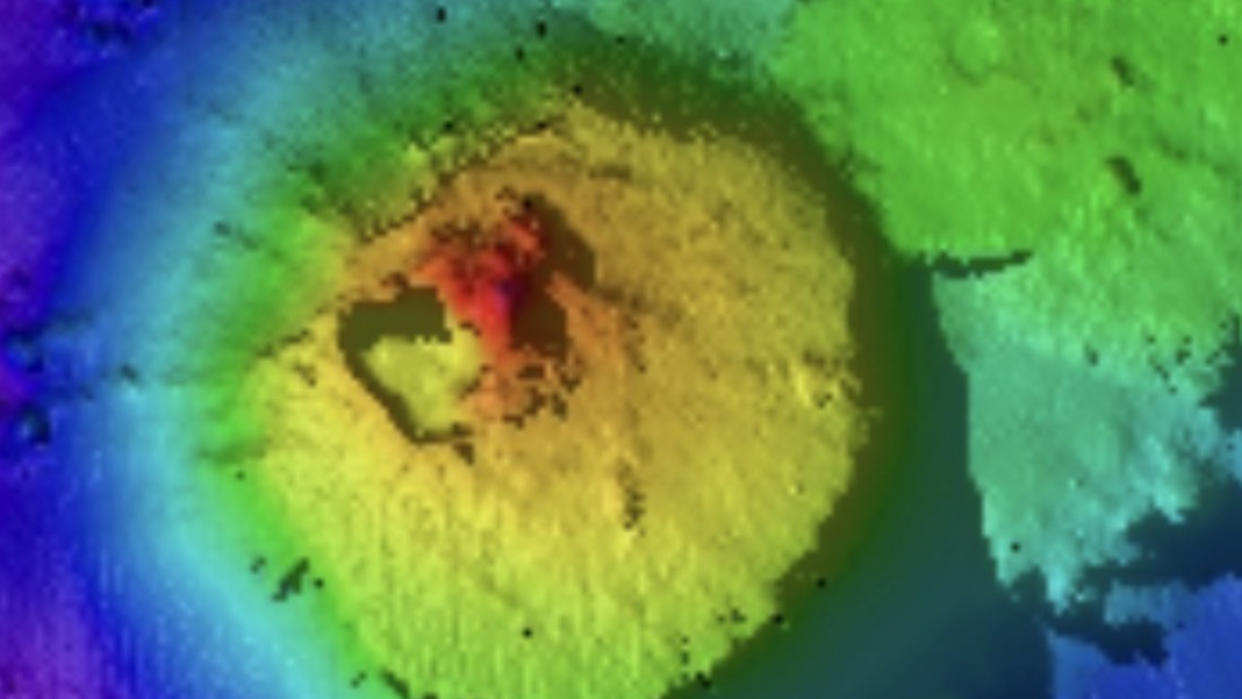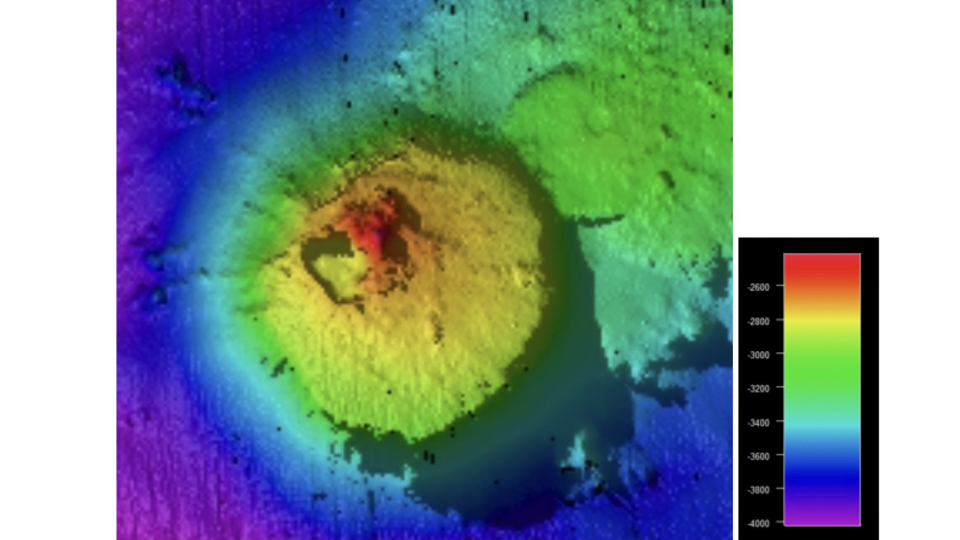Giant seamount found in waters off Guatemala nearly 2X the size of Burj Khalifa

- Oops!Something went wrong.Please try again later.
 *Research Vessel __Falkor__ (too) [SOI](https://schmidtocean.org/massive-new-seamount-off-guatemala/)*
On a recent seafloor mapping mission by the Schmidt Ocean Institute (SOI), the research vessel Falkor (too) discovered an underwater mountain surpassing the height of the Burj Khalifa, the world’s tallest building.
The previously-hidden giant is a seamount rising 1,600 metres and covers 14 square kilometres. By comparison, the Burj Khalifa is about 828 metres tall.
The seamount at a depth of 2,400 metres below sea level.
Seamounts are recognized as biodiversity hotspots where deep-sea corals, sponges, and various invertebrates live. Discovering such a large structure in the middle of the ocean is yet another example of how much there is left to learn about the depths of the sea.
In an email to CNN, Les Watling, an emeritus biology professor with the University of Hawaii at Manoa, said the fact that the enormous seamount was previously undocumented is "a bit amazing."
“Seamounts have been explored only relatively recently due to the advent of human occupied submersibles and very capable remotely operated vehicles (ROVs)," he added.
Lots left to discover
With the help of satellite data, NOAA Ocean Exploration estimates there are over 100,000 unexplored seamounts taller than 1,000 metres in the ocean.
“A seamount over 1.5 kilometres tall which has, until now, been hidden under the waves highlights how much we have yet to discover,” Dr. Jyotika Virmani, executive director of SOI, said in a statement.
“A complete seafloor map is a fundamental element of understanding our ocean, so it’s exciting to live in an era where technology allows us to map and see these amazing parts of our planet for the first time.”
This marks the ninth significant seafloor discovery since the launch of the Falkor (too) research vessel in March.
Previous findings include two uncharted Galápagos Islands Marine Reserve seamounts, three new hydrothermal vent fields, a novel ecosystem beneath hydrothermal vents, and two cold-water coral reefs.
“On every expedition, those aboard Falkor (too) have found the unexpected, the awe-inspiring, the new. While there is so much we’ve come to understand as discoveries tumble ever faster into view, so much remains unknown in our ocean–and we are thrilled to continue exploring,” Wendy Schmidt, co-founder and president of Schmidt Ocean Institute, expressed enthusiasm for the ongoing exploration aboard Falkor (too), said in a statemetn.

Colour-graded bathymetry of the seamount, rising from about 4,000m and peaking at about 2,400m. Seafloor mapping during a Schmidt Ocean Institute expedition has revealed an underwater mountain twice as high as the Burj Khalifa, the world’s tallest building, in international waters off Guatemala. The 1,600-metre (5,249-foot) seamount covers 14 square kilometres and sits 2,400 metres below sea level. (Image and caption: SOI)
Mapping the seafloor
Since 2013, Schmidt Ocean Institute has mapped 1.44 million square kilometres of seafloor, uncovering more than 20 underwater features. As of 2023, a detailed map covering almost 25 per cent of the seafloor at a resolution of 100 metres or higher is available.
In collaboration with Seabed 2030 and other partners, Schmidt Ocean Institute aims to accelerate ocean mapping efforts with a plan to map the entire seafloor by 2030.
The institute says the initiative is crucial for safe navigation at sea, sustainable marine resource management, and the protection of coastal communities.

